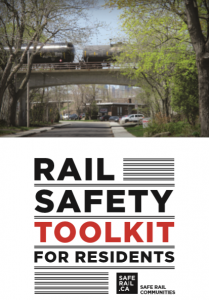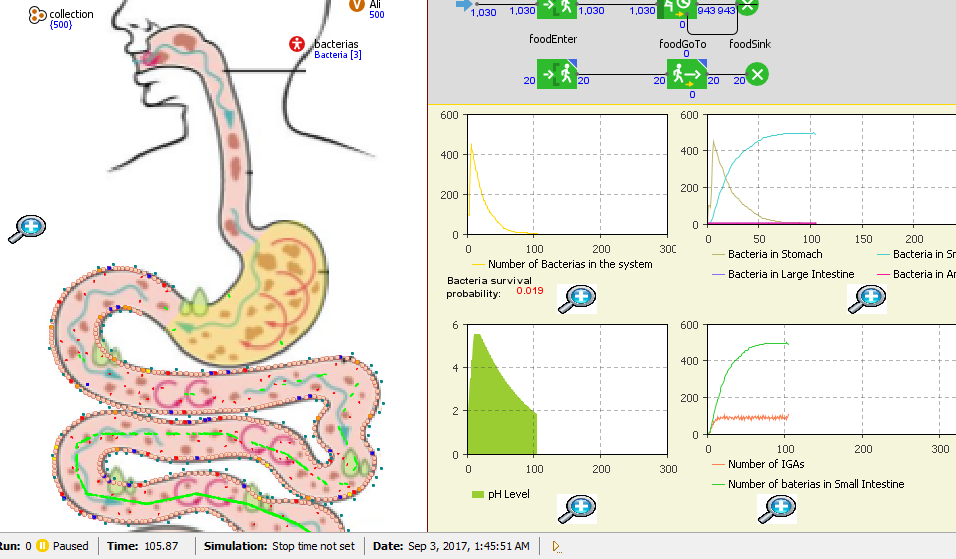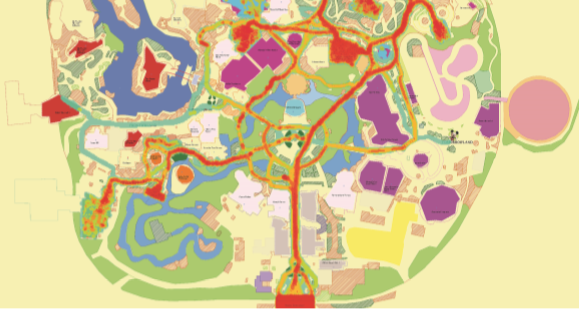ARGUS: Radar-based All-Weather Roadway Safety System
2019 – 2021
The objective of this three-year, collaborative project titled “ARGUS: Radar-based All-Weather Roadway Safety System,” is to demonstrate an effective and affordable all-weather solution to increase roadway safety for first responders. The direct involvement of first responders from York Regional Police, and traffic safety and emergency response experts from York University, is crucial to its success.
The project contract, awarded under the Canadian Safety and Security Program (CSSP), is led by Defence Research and Development Canada’s Centre for Security Science (DRDC CSS) in partnership with Public Safety Canada. The project has two other industry partners – York Regional Police and the Ontario Good Roads Association.
Team members
- Dr. Peter Park from the Civil Engineering Department at the Lassonde School of Engineering
- Dr. Ali Asgary, Disaster & Emergency Management, at the Faculty of Liberal Arts & Professional Studies
- Ahmad Mohammadi, PhD Student, Civil Engineering Department at the Lassonde School of Engineering
More Information and Resources
Developing a Spontaneous Volunteers Management Framework and System for Major Disasters & Emergencies in Ontario
The project aims to develop and study spontaneous volunteers (SVs) and a spontaneous volunteer management system (SVMS) prototype for Ontario. Incorporating the current best practices in Canada and elsewhere, and addressing the existing challenges and issues, this project will develop the proposed SVMS in close partnership between the researchers from York University (Disaster and Emergency Management & Human Resources Managemnet) and the NGO Alliance of Ontario and the City of Brampton. The outcome of this study will improve and strengthen the management of disaster volunteers in Ontario.
Project Main Goals
- Enhance SVs management and their effectiveness during major emergencies;
- Adopt the latest theories and technologies for usage in SVs management;
- Better serve the people and communities impacted by disaster and emergencies;
- Deepen our understanding of the SVs management challenges and issues in short and long run;
- Build organizational and technical capacities for SVs management in Ontario in collaboration with a variety of different stakeholders; and
- Develop a SVs management system application that enables SVs management agencies to recruit, organize, coordinate, dispatch and effectively manage SVs during major emergencies.
Team Members
- Dr. Ali Asgary, Disaster & Emergency Management, at the Faculty of Liberal Arts & Professional Studies
- Professor Ken McBey, Disaster & Emergency Management and School of Human Resource Managemnet, at the Faculty of Liberal Arts & Professional Studies
- Alain Normand, Emergency Manager, City of Brampton
- Steve Elliot, NGO Allience of Ontario
- Leila Daddoust, Master of Disaster & Emergency Management (MDEM) candidate
- Wondwosen Assefa Agune, Master of Disaster & Emergency Management (MDEM) candidate
Rail Safety Toolkit
Project summary
Led by Safe Rail Communities this project developed a rail safety toolkit to spread awareness about the hazards associated with rail emergencies – including derailments, collisions, and the release of hazardous materials into natural environments and communities.
The goal of this toolkit was to provide people and communities with clear information about rail safety and dangerous goods that can assist in emergency preparedness efforts at both the household and community levels.

Funded by: Transport Canada
Project output: Rail Safety Toolkit
LIAM-ADERSIM Agent-based Simulator for the Gastro-intestinal Pathway of L. monocytogenes

Project Summary
Understanding the key mechanism of step-by-step transitions of the food-pathogen L. monocytogenes within a host is significantly important for risk evaluation and reduction. This project will develop an agent-based simulator to imitate the gastro-intestinal pathway of L. monocytogenes. The biological factors such as pH variation, digestion process, stomach emptying time and pathogen factors such as survival fitness will be added to the features of the simulator. The simulator will consider the effect of food-matrix such as liquidness and fat concetration in the survival of pathogen. The effect of food intake time and randomness of pathogen distribution in the food portions will be also taken into consideration. The simulator featured by the key physiological processes will account for the pathogen survivability in the gastro-intestinal tract of human hosts.
Funded by: Public Health Agency of Canada (PHAC)
Team members
- Jianhong Wu, LIAM, York University, Canada
- Ali Asgary, ADERSIM, York University, Canada
- Ashrafur Rahman, Postdoctoral Fellow, LIAM, York University, Canada
- Jeff Farber, FSQA, CRIFS, Guelph University, Canada
- Daniel Munther, Cleveland State University, USA
- Aamir Fazil, National Microbiology Laboratory, Public Health Agency of Canada, Canada
- Ben Smith, National Microbiology Laboratory, Public Health Agency of Canada, Canada
Developing a fire response simulation test bench based on NFID

Project summary
This research project was initiated to develop a simulation engine leveraging the National Fire Information Database (NFID) in order to provide fire departments across Canada with a data driven tool for evidence-based planning and response to fire incidents, thereby helping them create safer communities.
Funded by: Canadian Association of Fire Chiefs (CAFC).
Team members
- Adriano O. Solis
- Ali Asgary
- Jenaro Nosedal-Sánchez
- Beatrice Zaccaro
Selected Project Outcomes: Full project report
Fires and Disasters: Examining Fire Incidents during Major Disasters and Emergencies in Canada

Canadian cities, towns, municipalities, regions, and provinces experience various types of major disaster and emergencies. Major disasters and emergencies are not just bigger than everyday emergencies that fire departments normally respond to them. They can quickly overwhelm fire departments. They may require the application of different performance standards and protocols. While fire departments are proficient at planning and preparing for normal operating conditions and some of them have great experiences with large emergencies, better understanding and preparedness for disaster events is more challenging. Knowledge of the expected situations and preparedness lead to better fire response during such events. Understanding the nature, volume, characteristics and response performances of fire departments during major disasters and emergencies is very important. This study aims to provide some insights into the patterns and characteristics of fire incidents during major disaster and emergencies in Canada using the National Fire Incident Database (NFID).
Funded by: Canadian Association of Fire Chiefs (CAFC).
Team members
- Ali Asgary
- Jianhong Wu
- Hadi Rezvani
- Jenaro Nosedal-Sanchez
- Julianna Primiani
Project outcomes: Draft project report
Ali Asgary, York University; Jenaro Nosedal-Sanchez, Julianna Primiani,
Fires and High-rise Buildings in Canadian Cities, Urban Affairs Association 2018 UAA Annual Conference, Toronto, April 4-7.
Jenaro Nosedal-Sanchez, Ali Asgary, Adriano O. Solis, Jianhong Wu, 2018, "Fire Response Time Variations in Urban Areas Under Normal and Large Emergencies: Case of 2013 Toronto Ice Storm and Flash Flood Emergencies", Urban Affairs Association 2018 UAA Annual Conference, Toronto, April 4-7.
Agent-Based Simulation of Forced Displacement
As part of:

As part of the bigger project, this project aims to develop an agent-based simulation application for forced displacement caused by various factors such as conflicts, natural hazards, climate change, etc..
Funded by: NSERC CREATE, ORF, SSHRC
Research Team
- Ali Asgary
- Adriano Solis
- Jenaro Nosedal-Sanchez
- Kazi Rahman
- Francesco Longo
- Maria Chiara Curinga
- Luigi Emanuele Alessio
- Hadi Rezvani
Project outcomes
Nosedal-Sanchez, J., Asgary, A., and Solis, A., Longo, F., 2017, “MODELING AND SIMULATION OF FORCED POPULATION DISPLACEMENT FLOWS USING COLORED PETRI NETS”, DHSS 2017 Proceeding, Barcelona, Spain.
Asgary, A., Solis, A.O., Longo, F., Nosedal, J., Curinga, M.C., and Alessio, L.E., "An Agent-Based Modeling and Simulation Tool for Estimation of Forced Population Displacement Flows in Iraq" Proceedings of the 6th International Defense and Homeland Security Simulation Workshop, Larnaca, Cyprus, September 2016, 75-81.
Developing Disaster Mutual Assistance Decision Support Tool for Electricity Utilities
Funded by: Toronto Hydro, Canadian Electricity Association
Research team
- Ali Asgary
- Benjamin Pantin
- Jenaro Nosedal-Sanchez
- Jianhong Wu
- Maryam Shafei-Sabet
- Bahareh Esmaili
- Arun Selvadurai
Project Outcomes
Asgary A., Nosedal-Sanchez, J., Pantin, B., Wu, J., and Shafei-Sabet, M., “Testing and validating a disaster mutual assistance decision support tool for electricity companies”, Int. J. Business Continuity and Risk Management, 7(4).
Asgary, A., Pantin, B., Emamgholizadeh Saiir, B., and Wu, J., (2017) "Developing disaster mutual assistance decision criteria for electricity industry", Disaster Prevention and Management: An International Journal, 26(2), pp.230 – 240.
Asgary A., Pantin, B., and Selvadurai, A., 2017, “Disaster Mutual Assistance Management Application for Canadian Electricity Companies”, ESRI Canada Education and Research Conference, University of Toronto, October 11, 2017.
Asgary A., Pantin, P., and Borowitz, J., 2015, “Developing a Mutual Aid Decision and Simulation Support Tool (MADSIM)”, North Atlantic Mutual Aid Assistant Group (NAMAG) Conference, Toronto, 26-27 October, Toronto.
Asgary A., 2015, “Simulating Disaster Mutual Assistance”, 2015 AnyLogic Conference, 6-7 November, Philadelphia
Crowd Movements Simulation in Disney Magic Kingdom

The purpose of this project is to investigate the effectiveness of how a mobile app integrating augmented reality and GPS technology can influence crowd behaviour in the themed entertainment industry. The study used AnyLogic Simulation system to measure how Disney characters can act as a crowd mitigation tool can influence crowd movements throughout the Magic Kingdom. Using data to represent park entrance rates, attraction duration, and wait times, the study was able to capture the level of influence Disney characters had on park guest’s movements throughout their visit. This simulation reveals that Disney characters have the ability to influence crowd behaviour with a probability rate of 30%. This data supports the view that the proposed mobile app will act as an effective crowd mitigation tool and can strategically influence crowd migration throughout the Magic Kingdom.
Research Team
- Meaghan Taylor
- Ali asgary
Project Outcome
Impacts of Airports Closures on Airline Route Network

Air transport represents the fastest way of moving people and goods. For this reason, it is critical to the global economy and the welfare of society. The resilience of air traffic networks is, therefore, of great importance. In the past two decades, various events have shown that air transport is vulnerable to disruptive events, such as extreme weather, terrorist attacks, volcanic eruptions, earthquakes, and pandemic influenza. The severity of the impacts on passengers and economic activities, and overall losses to stakeholders and for society in general, would highly depend on the vulnerability and resilience of these networks. The current research seeks to develop an agent-based model to simulate and analyze the vulnerability and resilience of airline routes to airport disruptions.
Project Team
- Ali Asgary
- Jenaro Nosedal-Sanchez
- Adriano Solis
- Francesco Longo,
- Luigi Alessio,
- Maria-Chiara Curinga
Project Outcomes
Asgary, A., Nosedal, J., Solis, A.O., Longo, F., Alessio, L.E., and Curinga, M.C., "Simulating the Impacts of Airport Closures on Airline Route Network" Proceedings of the 18th International Conference on Harbor, Maritime & Multimodal Logistics Modelling and Simulation, Larnaca, Cyprus, September 2016, 86-92.

